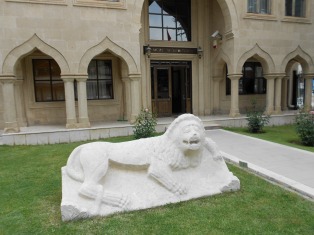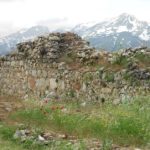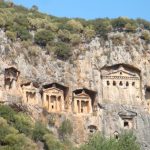Lakeside town Population: 95,000
Market day: Sunday
The third smallest of the lakes in Turkey’s Lake District is on the outskirts of Burdur. It’s worth coming to this pleasant small town before or after a trip to the ruins at Sagalassos to inspect the finds on display in the excellent local museum. For most people that’s about as far as it goes but if you linger you may find yourself becoming more and more pleased with what you find, especially in the older quarter behind the Ulu Cami where many old houses survive in varying states of repair.
Around town
If you leave the bus station from the rear and turn left you will come to the main road through town. Turn right and keep walking straight ahead until eventually you reach a small square filled with a lively tea garden.
Immediately behind it is the Archaeology Museum (closed Mondays) which houses the finds from the Roman sites at Sagalassos, Kremna, Kıbyra and Boubon as well as from much older sites such as Hacılar, Kuruçay, Höyücek and Yarımhöyük. It’s a very well labelled and informative museum even if the on-off lighting system will drive you mad. As ever, it’s also well worth taking a look at what sits outside in the grounds, including a fine font for immersive baptisms.
Part of the museum is housed in what was once the Pirkulzade Kütüphanesi (Library), originally built in 1240 and a fine piece of restrained Selçuk architecture.
If you return to the main street and cross the road beside the Hacı Mahmut Cami (1892) you will find yourself climbing a hill and coming first to the narrow streets of the old bazaar, in this case partially housed in sturdy stone buildings that are being restored.
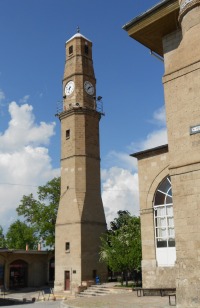 Keep heading uphill and soon you will see the town’s thin and not especially lovely saat kulesi (clocktower), built in 1942. Right beside it is the Ulu Cami. The original mosque on the site dated back to c.1300 when it was commissioned by the Hamitoğlu leader Feleküddin Dündar Bey. Sadly, that mosque was destroyed by a terrible earthquake in 1914 that killed some 30,000 people. The replacement is an early Republican model completed in 1930. Despite its relative newness, it still has an impressive interior of pale-green-painted wood with a fine ceiling pattern.
Keep heading uphill and soon you will see the town’s thin and not especially lovely saat kulesi (clocktower), built in 1942. Right beside it is the Ulu Cami. The original mosque on the site dated back to c.1300 when it was commissioned by the Hamitoğlu leader Feleküddin Dündar Bey. Sadly, that mosque was destroyed by a terrible earthquake in 1914 that killed some 30,000 people. The replacement is an early Republican model completed in 1930. Despite its relative newness, it still has an impressive interior of pale-green-painted wood with a fine ceiling pattern.
Behind the mosque narrow streets of pastel-coloured houses trip downhill to a water channel. On the far side the Mehmet Akif Ersoy Kültür Evi (closed Mondays) blocks from view the magnificent Bakibey Konağı, a 17th-century mansion that has been restored to its original splendour as exemplified by the first-floor başodası (main room) whose ceiling has been repainted in vivid gold and silver. The wall closest to the door retains untouched original paintings that mirror those to be seen in Sultan Ahmed III’s Fruit Room in Topkapı Palace, İstanbul.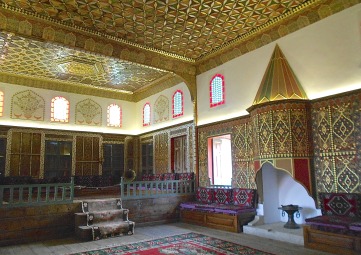
Two more rooms upstairs serve as a small ethnographic museum while the storage rooms on the ground-floor have been converted for presentations. While there, glance down at the bases of the wooden support columns – they were almost certainly brought here from Sagalassos or another of the nearby Roman cities.
The Mehmet Akif Ersoy Kültür Evi is also worth a quick look. In a restored (or reproduction?) Ottoman house, it acts as a memorial to the man who wrote the words for the İstiklal Marşı (Independence March), Turkey’s national anthem which is memorised by every schoolchild. There’s a model of him upstairs as well as many photographs and paintings – most interesting is the photo that shows him clad in a fez on the back of a camel visiting the Pyramids with friends (Ersoy is second from the left). Unfortunately all the labelling is in Turkish.
If you return to the main street, turn left and keep walking away from the otogar you will come eventually to Cumhuriyet Meydanı with a small park with a tea garden. Facing it is a collection of images of Turkic history that was erected in 1973 to commemorate the 50th anniversary of the founding of the Turkish Republic. Here, too, is a reproduction of Ersoy’s İstiklal Marşı. This part of town is rather upmarket with a four-star hotel on one corner and a very inviting Coffeemania attracting Burdur’s cool crowd on another.
Behind the Meydan you will find the elegant and newly restored Mısırlılar Evi, dating back to 1854 and with a pair of fountains built into its outer wall. More or less across the road from it is the small, restored Derviş Mehmet Paşa Kütüphanesi (Library).
In the Kavaklı neighbourhood the Greek Orthodox church, dating back to 1875 but extensively rebuilt after an earthquake in 1914, now houses a small natural history museum that might be of interest to dinosaur-fixated children.
Unlike Eğirdir and Beyşehir, Burdur is inland from the lake that bears its name. Catch a bus labelled “Plaj (Beach)” from behind the museum. however, and it will run you the 2km out to the shore where you can amble along the mudflats soaking up the peace and quiet. If you really want to stay by the lake the Serenler Hotel will probably be your best bet. Be warned that the water gives off a sulphurous pong.
Eating
This is hardly gourmet country but you can still eat perfectly well in Burdur and it’s worth looking out on menus for Burdur şiş, the local kebab which is rather like Akçaabat köfte; try it at the hugely popular Toros Aile Lokantası near Cumhuriyet Meydanı. Afterwards you can go for a trendy flavoured coffee or even a smoothie at Coffeemania which would be an even better place were it not beside such a busy, noisy road junction.
Sleeping
Hotel Özeren. Tel: 0248-234 1600
Serenler Hotel. Tel: 0248-242 9300
Transport info
There are more or less hourly buses to Burdur from the main Isparta bus station. Burdur Otogar is a good half hour’s walk from the town centre so take the servis bus into town and look for a local bus to bring you back again.
Day trip destinations
Read more: Waiting for the Burdur Bus
